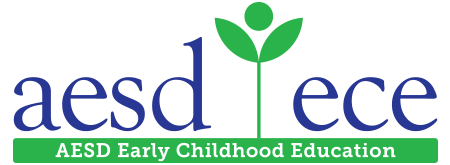Early Learning
What do we mean by School Readiness?
“Readiness” is a term used to describe preparation for what comes next! Since 1990, one of the top national educational goals has been that all children in America will start school “ready to learn.” While there is general agreement concerning the importance of school readiness, there is no consistent definition for it.
Children’s readiness for successful transition into kindergarten needs to be viewed as a community responsibility. Parents, prekindergarten teachers, elementary schools, and local community programs working together provide the best base for children’s success in school. Readiness needs to be defined in broad developmental terms so that the uniqueness of each child is preserved and respected. The National Education Goals Panel definition of school readiness covers three key areas:
- children’s readiness for school
- schools’ readiness for children
- family and community supports and services that contribute to children’s readiness for school success
Five Essential Elements of School Readiness
- Early Care and Education
- Parenting and Family Support
- Health and Social Services
- Schools’ Readiness for Children/School Capacity
- Program Infrastructure, Administration and Evaluation
Why is School Readiness Important?
Children’s School Readiness is affected by the early care and learning experiences they receive. The research in brain development emphasizes that early learning (especially from birth to five) directly influences a child’s ability to learn and succeed in school. These studies have contributed to a growing awareness of the importance of quality early education and prekindergarten experiences. Research indicates that preschoolers who attend high quality programs:
- Enter kindergarten with skills necessary for school success.
- Show greater undersatnding of verbal and numerical concepts.
- Are more socially competent.
- Show ability to stay with an activity longer.
- Are more likely to make typical progress through the primary grades.
- Are less often placed in special education classes.
- Are less likely to be retained in kindergarten.
What does a quality PreKindergarten experience look like?
SOCIAL/EMOTIONAL DEVELOPMENT
Young children need social emotional competencies. These skills are acquired through the development of close relationships, shared conversations and a nurturing environment. Preschool teachers guide children in learning social skills that include responsibility and self control. Social emotional skills are developed through the shared activities a of developmentally appropriate well designed preschool classroom environment. Preschool social emotional components are:
- Self awareness and regulation
- Social emotional understanding
- Empathy and caring
- Initiative in learning
- Interactions with familiar adults and peers
- Group participation
- Cooperation and responsibility
- Relationship-attachment to parents, teachers and caregivers
LANGUAGE AND LITERACY/ENGLISH LANGUAGE DEVELOPMENT
Children’s early language growth and later language outcomes are directly related to the verbal communication children receive from adults and other children. In the preschool classroom, students have meaningful and comprehensive opportunities for language stimulation. Teachers embrace the primary language of the child while supporting the development of English
The key competencies for being ready for kindergarten and becoming fluent communicators and readers are as follows
Language and Literacy
- Language use
- Vocabulay and grammar
- Concepts about print
- Phonological awareness
- Word and letter recognition
- Comprehension and analysis of age appropriate text
- Literacy interest and response
- Writing
Categories of English Language Development
- Listening
- Speaking
- Reading
- Writing
SCIENCE
Science in preschool fosters a joy of discovery and a positive approach to learning.Children become confident learners by identifying solutions and problem solving through persistent hands on experimentation become critical thinkers for a lifetime. The content of Science in preschool consists of:
- The skills and language of science/scientific inquiry
- Knowledge of Physical Sciences, Life Sciences, and Earth Sciences
MATH
Young children explore the mathematic domains through interactions with their everyday environment. Children experience math throughout the daily routine by counting, sorting, building shapes, measuring, and estimating. The preschool classroom is designed with intention and order to promote math experiences as the children play and explore their world. There are five main developmental math strands:
- Number sense
- Algebra and functions (classification and patterning)
- Measurement
- Geometry
- Mathematical reasoning
VISUAL AND PERFORMING ARTS
The visual and performing arts are natural to young children, exhibited early in the form of scribbling, pretending, humming, and swaying to music. In the preschool classroom, we engage and encourage children in arts activities on a regular basis. These activities lay the foundation and help wire children’s brains for successful learning
- Arts experiences are more about process than product
- Arts are inclusive and common to all
- Cultural competence and appreciation of the arts
- Artisitic thinking processes and problem solving
- Learning through dramatic and active play
- Aesthetics in the classroom and intentional environment design
- Disposition of learning and meaningful connections to the world
SOCIAL STUDIES
Children learn early how people live in the social world. Their preschool classroom mirrors the larger society with its diverse ethnic, religious, and socioeconomic backgrounds. Preschool teachers help children to think about themselves and their roles and responsibilities that they and others assume. Children are developing a sense of belonging to places and groups that are meaningful to them. They learn about the time and how their current experience is affected by their personal past and relates to their future
The components of Social Studies in preschool are:
- Sense of time (history)
- Sense of place (geography and ecology)
- A preschool community member (civics)
- Self and society
- Market place (economics)

